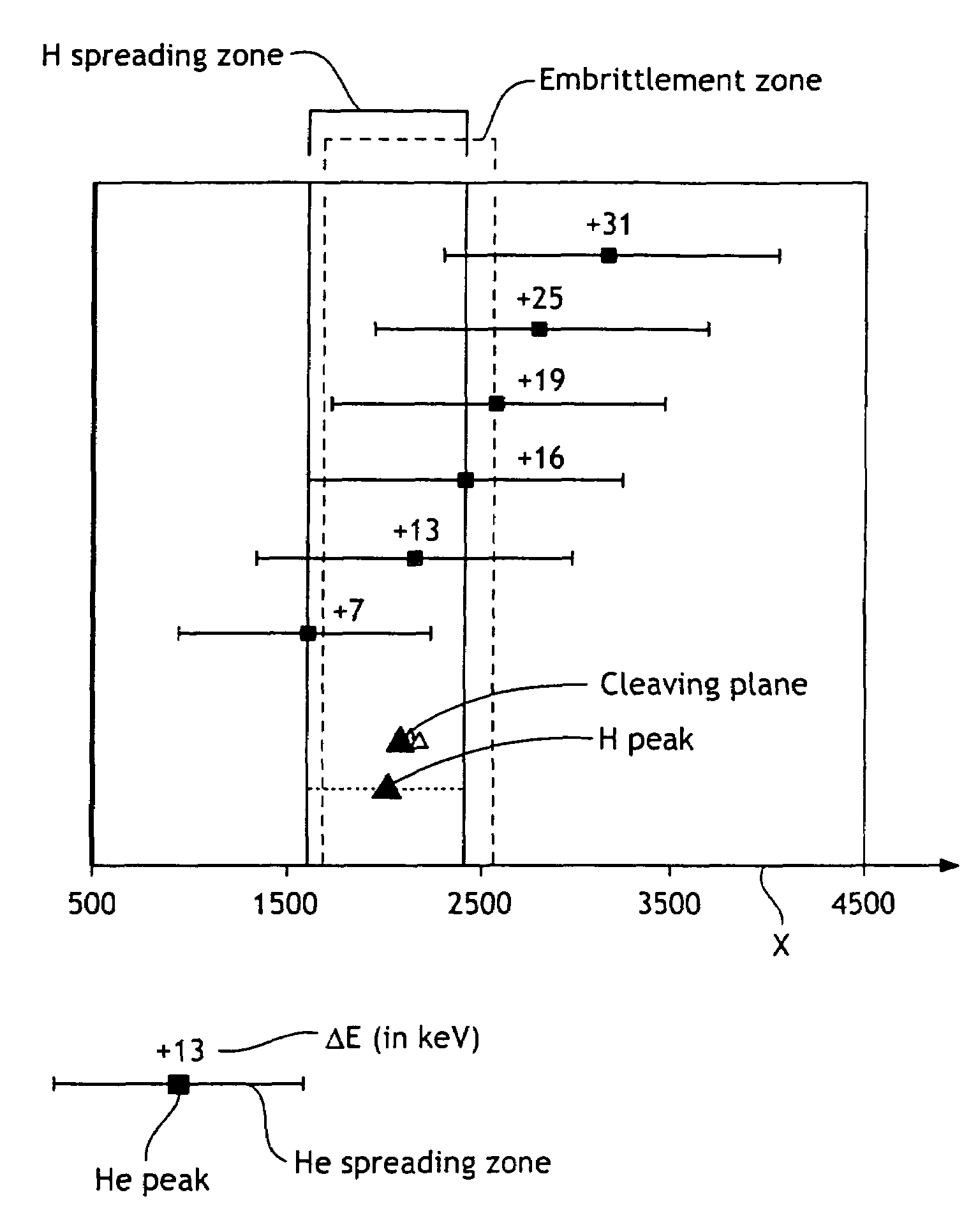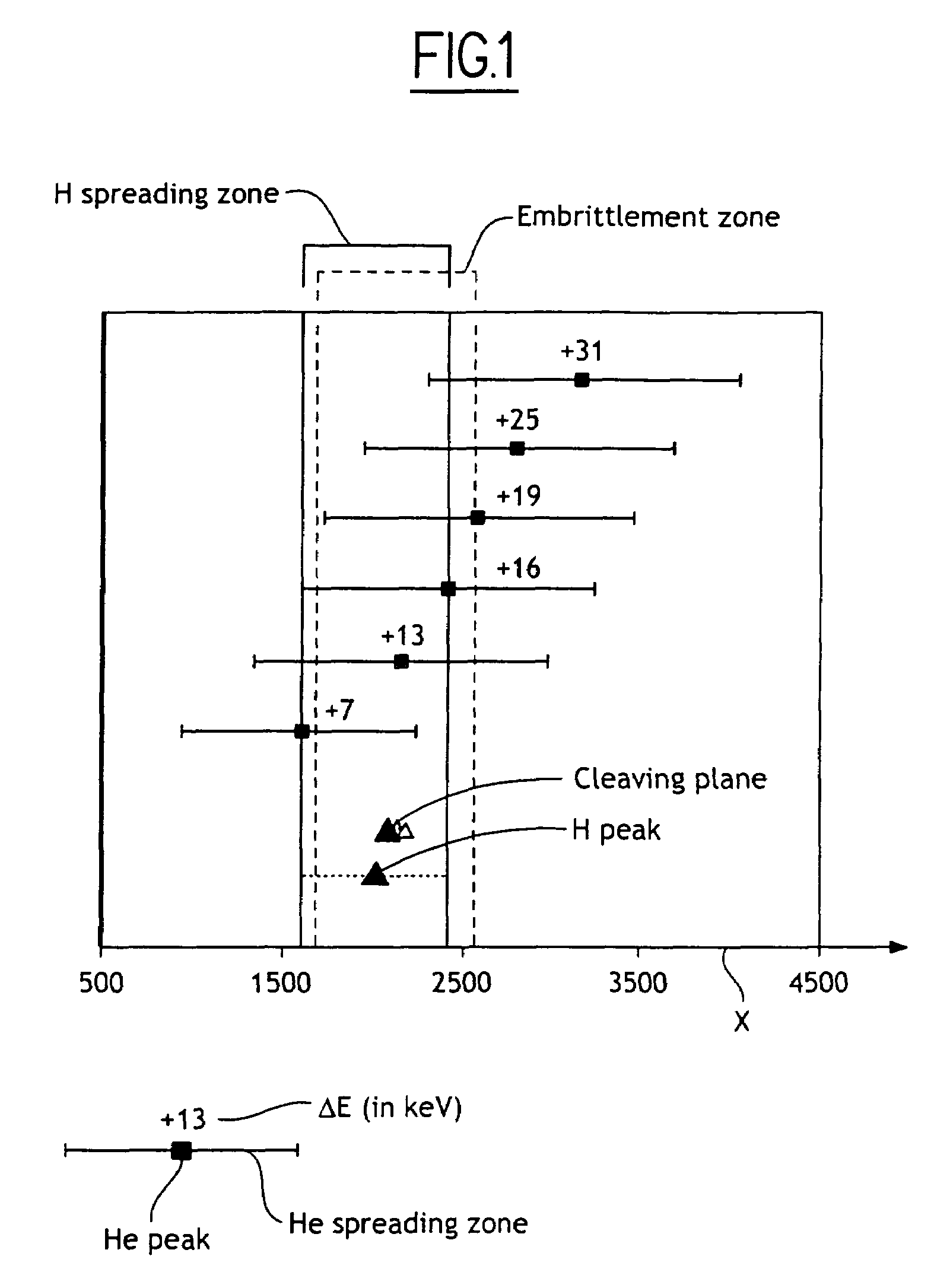Thin layer transfer method utilizing co-implantation to reduce blister formation and to surface roughness
a transfer method and co-implantation technology, applied in the direction of basic electric elements, electrical apparatus, semiconductor devices, etc., can solve the problems of voids appearing between the bonded substrates, increasing the risk of blister formation at the bonding interface, and increasing the risk of zones not being transferred onto the support substrate, so as to minimize the formation of blisters in the transfer layer and the surface roughness of the transfer layer
- Summary
- Abstract
- Description
- Claims
- Application Information
AI Technical Summary
Benefits of technology
Problems solved by technology
Method used
Image
Examples
Embodiment Construction
[0030]In order to fill the unresolved needs of the prior art, the invention proposes, according to a first aspect, a method for producing a structure comprising a thin layer of semiconductor material on a substrate, comprising the steps consisting in:[0031]performing a co-implantation of at least two different species under a face of a donor substrate from which the thin layer must be made, so as to create an embrittlement zone in the thickness of the donor substrate,[0032]placing the face of the donor substrate into close contact with a support substrate, after it has undergone implantation,[0033]detaching the donor substrate at the level of the embrittlement zone, so as to transfer a part of the donor substrate onto the support substrate and to form the thin layer on the latter,
at least a first species being implanted acting essentially chemically for forming platelet-like defects in the donor substrate, at least a second species being implanted acting essentially physically as a ...
PUM
 Login to View More
Login to View More Abstract
Description
Claims
Application Information
 Login to View More
Login to View More - R&D
- Intellectual Property
- Life Sciences
- Materials
- Tech Scout
- Unparalleled Data Quality
- Higher Quality Content
- 60% Fewer Hallucinations
Browse by: Latest US Patents, China's latest patents, Technical Efficacy Thesaurus, Application Domain, Technology Topic, Popular Technical Reports.
© 2025 PatSnap. All rights reserved.Legal|Privacy policy|Modern Slavery Act Transparency Statement|Sitemap|About US| Contact US: help@patsnap.com



